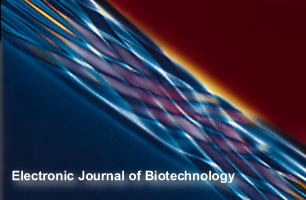Abstract
The potential to remove Cr (VI) from aqueous solutions through biosorption using the husk of Bengal gram (Cicer arientinum), was investigated in batch experiments. The results showed removal of 99.9% of chromium in the 10 mgl-1 chromium solution, the biomass required at saturation was 1 g mg-1. Kinetic experiments revealed that the dilute chromium solutions reached equilibrium within 180 min. The biosorptive capacity of the (bgh) was dependent on the pH of the chromium solution, with pH 2 being optimal. The adsorption data fit well with the Langmuir and Freundlich isotherm models. The adsorption capacity calculated from the Langmuir isotherm was 91.64 mg Cr (VI)/g at pH 2. The adsorption capacity increased with increase in agitation speed and an optimum was achieved at 120 rpm. The biosorption of Cr (VI) was studied by Fourier transform infrared spectroscopy (FTIR), which suggested that the presence of Cr (VI) ions in the biomass affects the bands corresponding to hydroxyl and carboxyl groups. Comprehensive characterisation of parameters indicates bgh to be an excellent material for biosorption of Cr (VI) to treat wastewaters containing low concentration of the metal.
Upon acceptance of an article by the journal, authors will be asked to transfer the copyright to Electronic Journal of Biotechnology, which is committed to maintain the electronic access to the journal and to administer a policy of fair control and ensure the widest possible dissemination of the information. The author can use the article for academic purposes, stating clearly the following: "Published in Electronic Journal of Biotechnology at DOI:10.2225/volXX-issueX-fulltext-XX".
The Copyright Transfer Agreement must be submitted as a signed scanned copy to biotec@ucv.cl. All authors must send a copy of this document.
